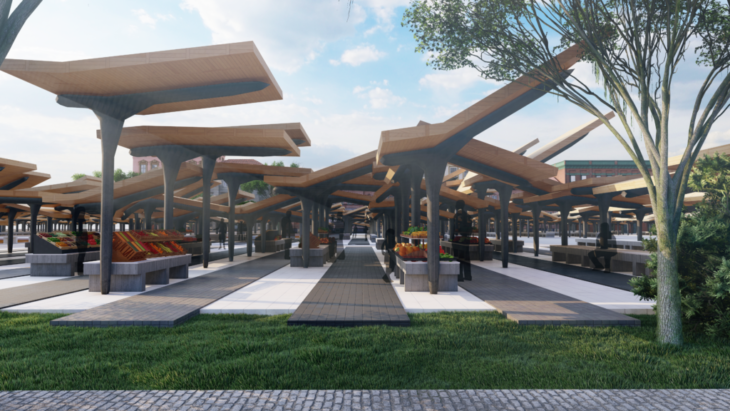Concept
The Grand Parade Market is a project that looks into the possibility of creating a catalogue of shading device typologies through the parametricism of its structural elements. Instead of looking at the optimization of these typologies, the project focuses on creating a gradient of performances regarding the ammount of sunlight in, effectively creating pockets, rythms and zones where more or less sunlight is allowed to pierce through into the ground level of the market, according to outdoor comfort level data.
Context and Programme
![]()
The Grand Parade in Cape Town, South Africa, is a plaza that has been historically used as an informal market, where traders set up small tents to catch the busy pedestrian route from the transportation hub to the city center. Today, it is used for vendor stalls, a food market and parking space. This project looks into developing a new masterplan for the market, expanding the infastructure to host more types of trade and activitities, as well as making use of an underground water stream.
![]()
![]()
Environmental Analysis
The first step in order to understand the local climate of Cape Town was conducting analysis for temperature, wind and radiation, looking for tendecies and patterns that would allow us to identify particular periods of they year where the natural conditions would be beneficial or harmful for the traders.
![]()
![]()
![]()
![]()
After that, conducting UTCI and Thermal Confort Perception exposed that a shading strategy would be the most important driver to establish an outdoor market that would be comfortable for both the winter and the summer.
![]()
![]()
![]()
Typologies
The parametric space of the typologies is constructed around the rotation of two arms of the structural element, inspired by the work of Fernando Tavora in the Santa Maria Market.
![]()
![]()
As a first step, a genetic algorithm was applied to understand the behaviour in terms of sunlight for different angle combinations for both arms of the structural element. This was conducted not only for one singular element, but also for a combination of three devices.
![]()
![]()
Once analysised, four final typologies were picked according to aesthetic, structural and functional criteria. This four typologies became the seeding geometry for a Self-Organizing Map to construct a diverse catalogue of in-betweens.
![]()
![]()
![]()
Outdoor Comfort Data
Once the 225 instances were constructed, a sunlight analysis simulation was carried out and the data clustered into 4 groups, each having a different performance regarding how much sunlight the instances in that cluster were allowing to reach the traders. To close this workflow, a method for picking five random samples from each group was created, so that diversity could easily be reached in the final agreggation on site.
![]()
![]()
![]()
In order to understand where each group of geometries should be placed on site, a site Shade Evaluation was carried out. For that, a plane was defined at three meter height above the entire site, further subdiveded into units of 3×3 meters. For each of these units, it is possible to extract a number (in a domain from -1 to 1) which indicates wether that unit is beneficial or harmful to the comfort of the traders underneath. Because the typologies that were to be placed on site were composed of agreggations of 4 panels, a partition of this comfort data had to be done (also into groups of 4). Finally, through K-Means Clustering, one can have 4 groups of shading geometries with particular performance levels matched to 4 groups that represent how high that performance must be to the comfort of the traders.
![]()
Agreggation
In order to implement the typologies on site, a Stochastic Agreggation method was used to iteretively pick from the catalogue and place those instances in the corresponding location that matched its performance requirement. Finally, a sunlight hour analysis was carried out to evaluate the final market composition.
![]()
![]()
![]()
![]()
Project Views
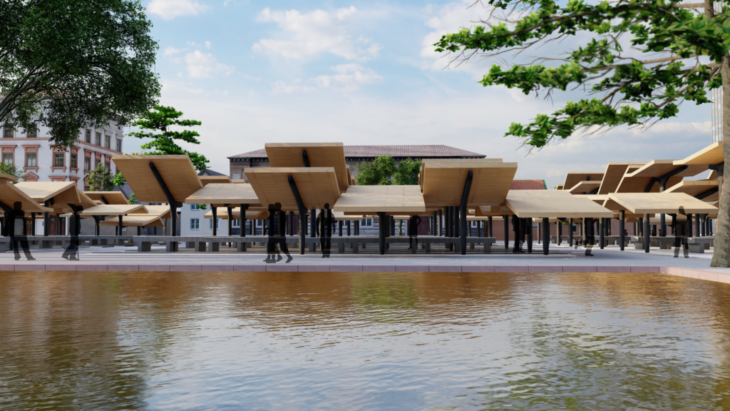
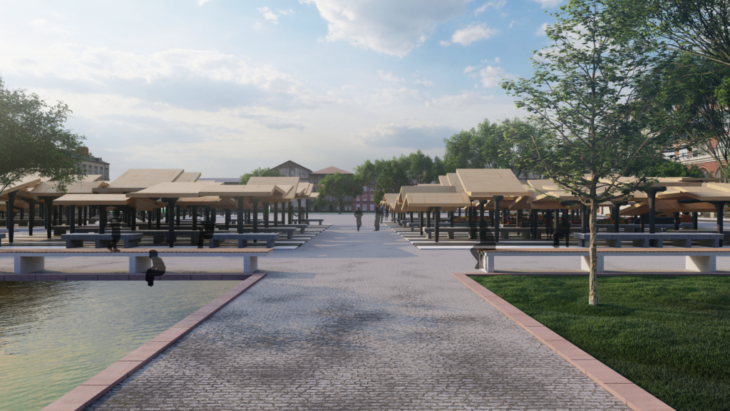
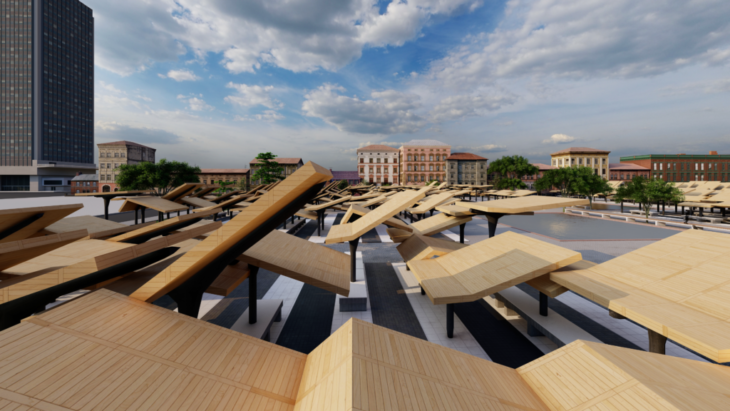
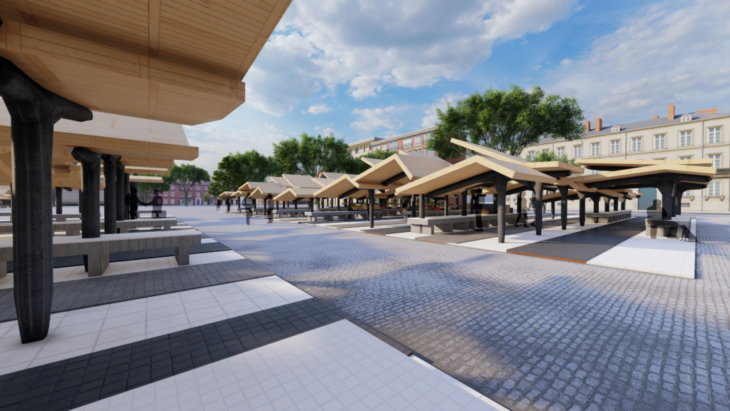
Credits
Grand Parade Market is a project of IAAC, Institute for Advanced Architecture of Catalonia developed at Masters in Advanced Computation and Design (MaCAD) in 2020/2021 by students: João Silva // Gerald Mandevhana, and faculty: Angelos Chronis // Aris Vartholomaios
